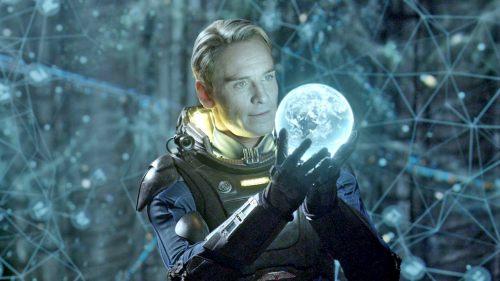#TIFF11 Review: Steve McQueen and Michael Fassbender explore SHAME
Shame, dir. Steve McQueen
When a Steve McQueen film is successful it’s hard to say that you “enjoyed” it, it makes more sense to say you were “affected” by it. And in Shame, McQueen’s second feature film and second collaboration with Michael Fassbender, it does just that by focusing on an Irish immigrant living in New York City who has a sexual addiction on the verge of self-destruction. This man is Brandon and during the day he works at a generic financial firm while at night he’s in search of some sort of sexual outlet. This outlet could involve having sex in public with a random stranger or staying at home to watch an internet cam girl perform his every desire. Whatever the release is, it’s Brandon’s way of coping with something deeply seeded, something he manages to suppress through erotic means until his sister Sissy (Carey Mulligan) crashes back into his life.
I love that the title’s of McQueen’s films (Hunger and Shame) act as straightforward thematic statements. As in “this is what I’m going to make you feel,” and with his previous work in short films as art installations he’s adept at controlling sight and sound to get you to feel. In Hunger he used extremely long takes and utter silence to capture the slow passage of time and pain that was the 1981 Irish hunger strike. In Shame he uses the human body in various modes of emotional and physical undress to process sex in its many forms. Some scenes are about lust, others about lovemaking, while most of it is about how ugly sex can be. Much has been made of the NC-17 rating and the full-frontal nudity of it’s two stars, but it’s all geared towards unsexualizing what you’re seeing. That’s one of its greatest accomplishments, it takes you from one end of the sexual spectrum where the passion is palpable to the other end where it’s just flesh slapping together. Throughout all of this McQueen uses the same artistic eye that made Hunger a joy to watch despite the context. Shame is full of angular, cold compositions indicative of the New York setting and the character’s own loneliness with a sound design full of the relentless mechanical and the desperate technological. This is McQueen’s New York City.
The fine art aesthetic would just be pretty pictures if it wasn’t emotionally anchored by the brilliant performances of Fassbender and Mulligan. The two actors are able to telegraph the lifelong relationship of Brandon and Sissy without needing to tell us. We know by how they look at one another that there’s a deep love between the two. But a love that’s damaged and erratic, going from scenes of pure to joy to scenes of pure utter hate. Below the surface we sense something from their shared past that each handles differently. Sissy seeks the love of others to cope with deep depression while Brandon seeks sexual release to cope with seething anger. We never find out what this past is, but Sissy reveals something tellingly towards the end of the movie when she says, “We’re not bad people, we just come from a bad place.” It’s a heartbreaking revelation made all the more tragic in that they really are good people who are just unable to navigate their inner turmoil and when they need to lash out they only have each other to do it to.
The third act of Shame is an artistic tour de force for McQueen as he slowly intensifies Brandon’s NYC tour of self-destruction by slowly increasing the dissonance of time and place. It’s hard to watch Brandon take a deep dive into his compulsion, but it’s made mesmerizing by the expertly crafted cumulative effect of audio/visual to makes us feel the thematic statement set forward by the title: shame. And like any successful McQueen film, by the end, you’ll be affected.



